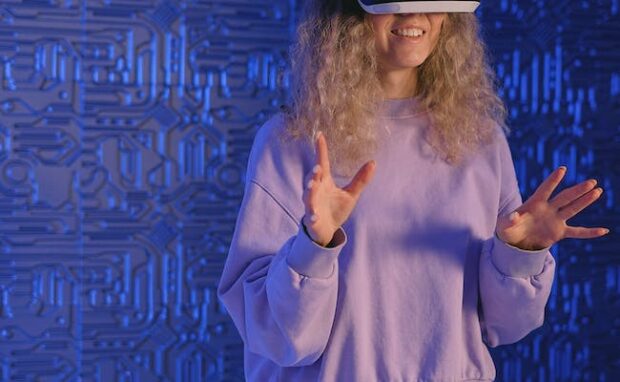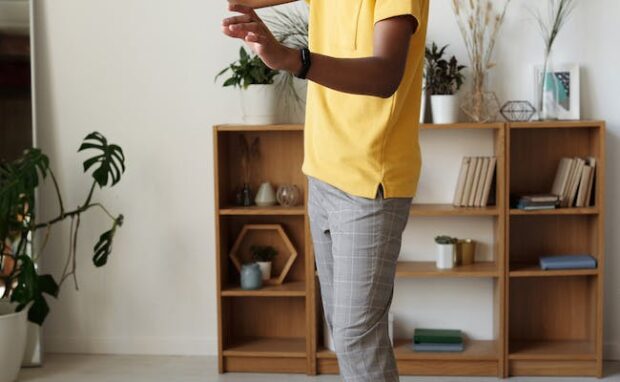Acoustic Touch might help blind people see again
Sydney researchers have developed a way to help blind people see using smart glasses and sound. They called it Acoustic Touch, which uses audio rendering and head tracking technology to help people determine the location and identity of objects. More importantly, they could integrate their invention into existing smart glasses.
Technology has been helping the impaired restore bodily functions for years. For example, deaf people can wear hearing aids to help them detect sounds again. This function continues to grow as we get more innovations like Acoustic Touch. Soon, you or your loved ones may benefit from this technology, so learning more about it is ideal.
This article will explain how the researchers made and tested Acoustic Touch. Later, I will discuss other technologies poised to restore human senses.
How does Acoustic Touch work?

I could explain Acoustic Touch by comparing it to how bats traverse pitch-black caves. They use echolocation, which involves emitting sound waves and listening to them once they bounce back to the user.
Bats can determine the distance and size of surrounding objects based on returning sound waves. Similarly, Interesting Engineering said Acoustic Touch involves “head scanning and auditory icons to represent objects in the user’s field of view.”
Users may rotate their heads to hear better while wearing Acoustic Touch smart glasses. Researchers from the University of Technology Sydney and the University of Sydney tested Acoustic Touch by integrating it into smart gasses.
They partnered with ARIA Research to develop a Foveated Audio Device (FAD). The FAD consisted of NReal Light AR Glasses and an OPPO Find X3 Pro Android phone.
It used OpenCV and the Unity Game Engine to detect objects, enhance clarity, and create a virtual space for mapping detected objects in 3D. They tested this technology by performing a comprehensive evaluation study on 14 adult participants.
Seven had little to no vision, while the remaining participants had blindfolds to serve as a control group. The study involved a training stage with seated and standing tasks divided by mandatory rest breaks.
You may also like: Facebook working on smartwatch
Next, the researchers compared FAD’s performance with two idealized conditions: a sequential audio presentation and a verbal clock face description. Volunteers identified household items described from their wearable devices and an external source.
Then, they searched for specific objects without any tools. As a result, people using the Acoustic Touch device had a higher success rate in locating items.
However, blindfolded subjects performed worse when using FAD. Nevertheless, the researchers concluded that Acoustic Touch has promising uses but requires further development.
What are the other similar projects?

Other technologies are trying to restore other human senses. For example, a doctoral student at Cornell University, Ruidong Zhang, made a pair of eyeglasses that help people with speech problems speak again.
His EchoSpeech device enables users to communicate with others via smartphone. Like Acoustic Touch, it uses sound waves to map a user’s lips.
The AI glasses use sonar to determine a user’s mouth shapes and movements as they speak. Then, it matches those sound waves with a Smart Computer Interfaces for Future Interactions (SciFi) Lab algorithm.
You may also like: ChatGPT Glasses Guide You Through Interviews
This system brings 95% accuracy to speech recognition, making it more useful. These AI glasses look inconspicuous due to their tiny microphones and speakers. As a result, the EchoSpeech is more practical for daily use.
Tesla CEO Elon Musk told investors he will create cyborg limbs better than biological ones. “By combining a Neuralink implant and a robotic arm or leg for someone that has their arm or leg—or all arms or legs—amputated, we believe we can give basically a cyborg body that is incredibly capable.”
“I think it would be incredible to potentially help millions of people around the world and give them an arm or leg that is as good, maybe long term better than, a biological one.”
Conclusion
Experts from the University of Sydney and the University of Technology Sydney created a technology that could help blind people see. Acoustic Touch uses echolocation to help the visually impaired navigate their surroundings.
Initial tests show it could have practical applications with further development. Also, it could integrate with existing models of smart glasses, making it convenient for potential users.
Gain more information about Acoustic Touch by checking its page on the Public Library of Science website. Learn more about the latest digital tips and trends at Inquirer Tech.